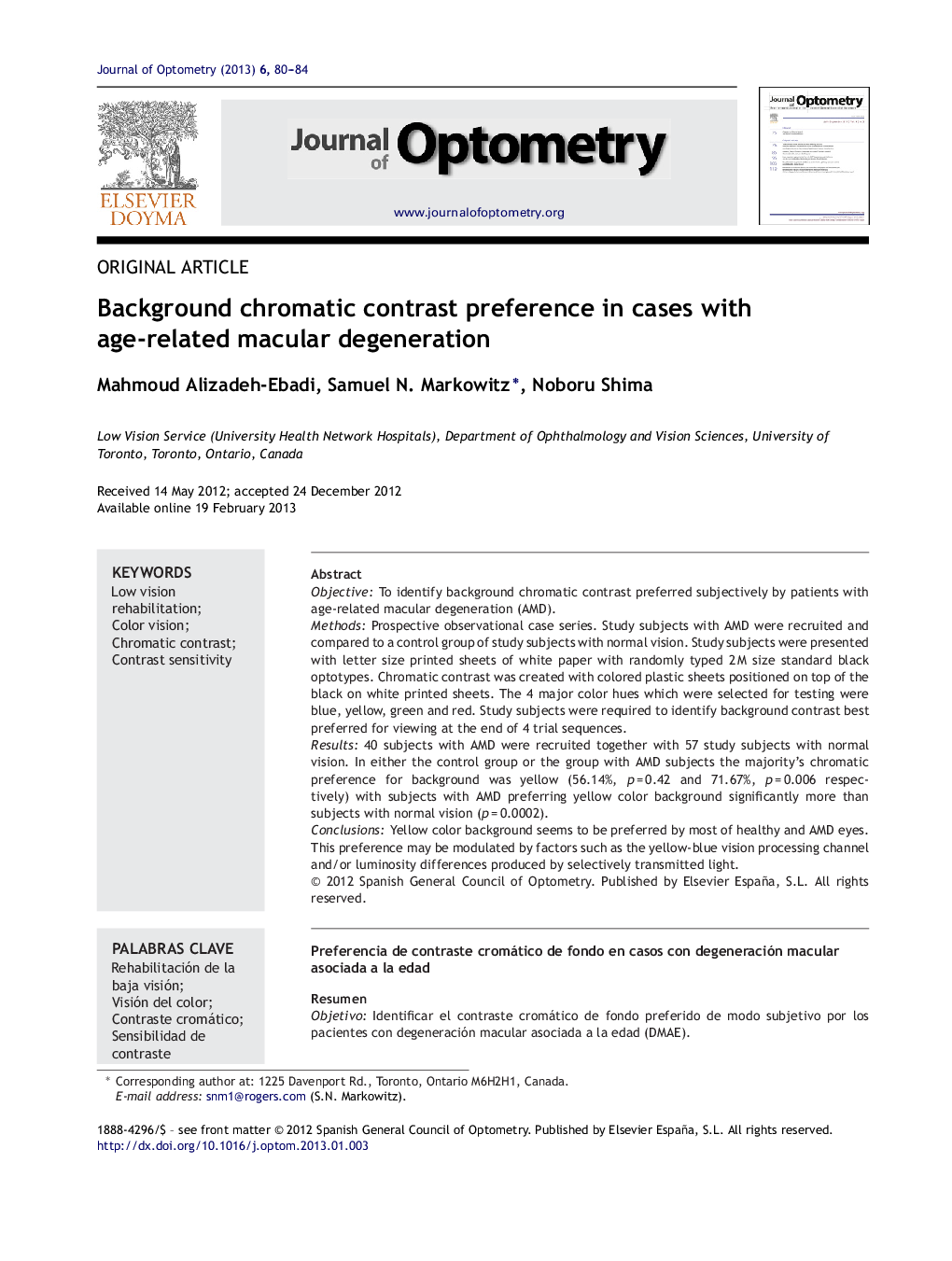| Article ID | Journal | Published Year | Pages | File Type |
|---|---|---|---|---|
| 2698777 | Journal of Optometry | 2013 | 5 Pages |
ObjectiveTo identify background chromatic contrast preferred subjectively by patients with age-related macular degeneration (AMD).MethodsProspective observational case series. Study subjects with AMD were recruited and compared to a control group of study subjects with normal vision. Study subjects were presented with letter size printed sheets of white paper with randomly typed 2 M size standard black optotypes. Chromatic contrast was created with colored plastic sheets positioned on top of the black on white printed sheets. The 4 major color hues which were selected for testing were blue, yellow, green and red. Study subjects were required to identify background contrast best preferred for viewing at the end of 4 trial sequences.Results40 subjects with AMD were recruited together with 57 study subjects with normal vision. In either the control group or the group with AMD subjects the majority's chromatic preference for background was yellow (56.14%, p = 0.42 and 71.67%, p = 0.006 respectively) with subjects with AMD preferring yellow color background significantly more than subjects with normal vision (p = 0.0002).ConclusionsYellow color background seems to be preferred by most of healthy and AMD eyes. This preference may be modulated by factors such as the yellow-blue vision processing channel and/or luminosity differences produced by selectively transmitted light.
ResumenObjetivoIdentificar el contraste cromático de fondo preferido de modo subjetivo por los pacientes con degeneración macular asociada a la edad (DMAE).MétodosEstudio prospectivo observacional. Se seleccionó a un grupo de pacientes con DMAE con DMAE para ser comparado con un grupo control de pacientes con visión normal. A ambos grupos de pacientes se les presentaron hojas de papel blanco impresas con optotipos negros estándar de tamaño 2 M, en secuencia aleatoria. Se creó contraste cromático mediante láminas de plástico de colores situadas por encima de las hojas impresas en blanco y negro. Se seleccionaron para la prueba los 4 tonos de colores principales: azul, amarillo, verde y rojo. Se solicitó a los pacientes bajo estudio que identificaran el contraste de fondo preferido para la visión, al final de 4 secuencias de prueba.ResultadosSe seleccionaron 40 pacientes con DMAE, y 57 pacientes con visión normal. Tanto en el grupo de control como en el grupo de pacientes con DMAE la preferencia cromática mayoritaria fue para fondo amarillo (56,14%, p=0,42 y 71,67%, p=0,006 respectivamente), teniendo los pacientes con DMAE una mayor preferencia por el color amarillo que los pacientes con visión normal (p=0,0002).ConclusionesEl fondo de color amarillo parece ser el preferido por la mayoría de pacientes, tanto sanos como enfermos. Esta preferencia podría modularse mediante factores tales como el canal de procesamiento de la visión amarillo-azul y/o las diferencias de luminosidad producidas por la luz transmitida selectivamente.
